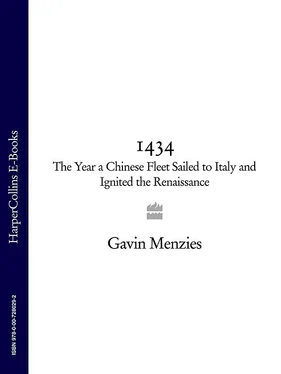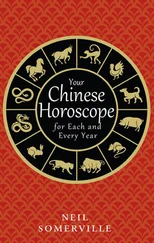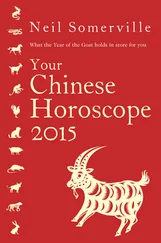Then suddenly, unexpectedly, on May 29, 1425, Zhu Gaozhi died. He was succeeded by his son Zhu Zhanji, Zhu Di’s grandson.
Zhu Zhanji seemed destined to be one of China’s greatest emperors. Far more cautious than Zhu Di, he was nonetheless extremely clever. He quickly realized that China’s abdication as Queen of the Seas would have disastrous consequences—not least that the barbarians would cease paying tribute. What’s more, the dream of a world united in Confucian harmony would be dashed and the colossal expenditure that had enabled China to acquire allies and settlements throughout the world would be wasted.
Zhu Zhanji also realized that the eunuchs disfavored by his father had their virtues. He set up a palace school to instruct them 9and appointed eunuchs to important military commands. He reversed his father’s plan to move the capital south to Nanjing, restoring it to Beijing, once again facing the Mongols. Yet he also believed in the Confucian virtues espoused by the mandarins and cultivated their friendship over bottles of wine. In many ways Zhu Zhanji combined the best of his father, including his concern for farmers, with that of his grandfather, whose boldness he emulated in approaching the barbarians.
The new reign would be known as Xuan De, “propagating virtue.” For Zheng He and the eunuchs, it marked a return to center stage. Soon another great sailing expedition would be launched, to bear the word to the barbarians to instruct them into deference and submission.
1. Twitchett, Cambridge History , vol. 3 p. 231.
2. Private correspondence between author and Mr. Frank Lee, 2005.
3. Tsai, Perpetual Happiness , reviewed in Journal of the American Oriental Society 122, no.4 (Oct.–Dec. 2002): 849–50. Viewable on JSTOR.
4. Dreyer, Zheng He, p. 6.
5. Tamburlaine died in 1405. His son Shah Rokh succeeded him in Persia, as did his grandson Ulugh Begh in Samarkand. Accounts of the accident are based on a Persian fifteenth-century account.
6. Dreyer, pp. 174–182.
7. Cambridge History of China p. 272. Dictionary of Ming Biography, p. 533.
8. Cambridge History of China p 278, 302. Renzong Shi Lu, ch. 1.
9. Cambridge History of China VII 286–8.
2
In 1430 the young emperor empowered Admirals Zheng He and Wang Jinghong to act on his behalf, issuing them a specially minted brass medallion, in a mix of zhuanshu 1and kaishu 2scripts, inscribed AUTHORISED AND AWARDED BY XUAN DE OF THE GREAT MING.
The emperor appointed Zheng He as his ambassador. Here is the edict from the Xuanzong Shi-lu , dated June 29, 1430: “Everything was prosperous and renewed but the Foreign countries, distantly located beyond the sea, still had not heard and did not know. For this reason Grand Directors Zheng He, Wang Jinghong and others were specially sent, bearing the word, to go and instruct them into deference and submission.” 3
This voyage to “instruct” the foreigners was the zenith of Admiral Zheng He’s great career. Before departing, he had two inscriptions carved in stone to document his achievements. The first inscription, dated March 14, 1431, was placed near the temple of the sea goddess at Taicang, downriver from Nanjing near the estuary of the Yangtze.
From the time when we, Cheng Ho [Zheng He] and his companions at the beginning of the Yung Lo period [1403] received the Imperial commission as envoy to the barbarians, up until now, seven voyages have taken place and each time we have commanded several tens of thousands of government soldiers and more than a hundred oceangoing vessels. Starting from Tai Ts’ang and taking the sea, we have by way of the countries of Chan-Ch’eng, Hsienlo, Quawa, K’ochih, and Kuli [Calicut] reached Hulu mossu [Cairo] and other countries of the western regions, more than 3,000 countries in all. 4
The other inscribed stone was placed farther down the Chinese coast at the mouth of the Min River in Fujian. It is dated the second winter month of the sixth year of Xuan De, which makes it between December 5, 1431, and January 7, 1432. It is called the Chang Le epigraphy.
The Imperial Ming dynasty in unifying seas and continents surpassing the three dynasties even goes beyond the Han and Tang dynasties. The countries beyond the horizon and from the ends of the earth have all become subjects and the most western of the western or the most northern of the northern countries however far they may be, the distance and the routes may be calculated. 5
Liu Gang, who owns a Chinese map of the world from 1418, a critical document that we will revisit later, has translated the Chang Le epigraphy as it would have been understood in the early Ming dynasty. His translation differs in some key respects from the modern translation produced above.
The Imperial Ming dynasty has unified seas and the universe, surpassing the first three generations [of Ming emperors] as well as of the Han and Tang dynasties. None of these countries had not become subjects, even those at the remotest corners in the west of the western region of the Imperial Ming and the north of the northward extension from the Imperial Ming are so far away, however, that the distance to them can be calculated by mileage. 6
The full import of the distinctions become apparent once we understand what the terms “western region of the Imperial Ming” and “northward extension from the Imperial Ming” meant at the time the stones were carved. “The term ‘western region’ originated during the Han dynasty and at that time referred to the region between Zhong Ling (now in the northern Xian Jiang autonomous region) and Dun Huang (at the edge of the Takla Makan Desert),” Liu Gang explains.
By the Tang dynasty, the extent of the “western region” had been extended to North Africa. The books written in the Ming dynasty describing travel to the western region adopt an even broader definition: Records of Journeys to the Western Region and Notes on the Barbarians , both books published during Zheng He’s era, extended the western region much further westwards. This is reflected in the Taicang stele, which refers to reaching “Hu lu mo Ssu (Cairo) and other countries of the western regions.” The second stele in Fujian mentions reaching “the remotest corners in the west of the western region,” i. e., far west of Cairo.” 7
The phrase “the north of the northward extension from the Imperial Ming” is even more pregnant with meaning. As Liu Gang has explained, in Zheng He’s era the Chinese had no concept of the North Pole as the highest point of the earthly sphere. Accordingly, when they traveled north from China to the North American continent, traversing the North Pole (great circle route), they believed the journey was always northward. The modern geographic understanding is that the great circle route from China to North America runs north to the North Pole, then south to North America. This concept was unknown to the Chinese.
To the Ming Chinese, “in the north of the northward extension from the Imperial Ming” means a place beyond the North Pole. This understanding is reflected in the 1418 world map, which shows a passage through the polar ice across the North Pole leading to America. (According to the Dutch meteorological office, there were three exceptionally warm winters in the 1420s, which could have melted the Arctic sea ice.) 8
Thus, if we take the two steles at their word, it appears that Zheng He’s fleets had already reached three thousand countries as well as the North Pole and North America beyond the Pole.
The emperor’s order to Zheng He to instruct distant lands beyond the seas to follow the way of heaven now seems awesome. Zheng He is being ordered to return to all three thousand countries he had visited in his life at sea. The task would require a huge number of ships—several great fleets readied for voyages across the world. This explains the lengthy delay between the imperial edict and the fleets’ actual departure from Chinese waters some two years later.
Читать дальше












